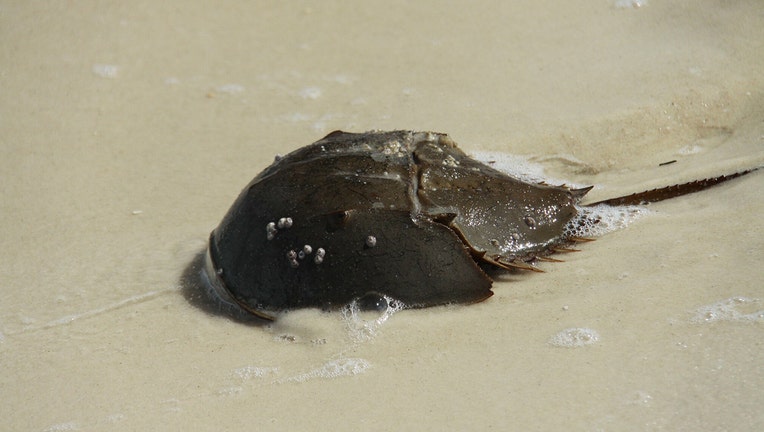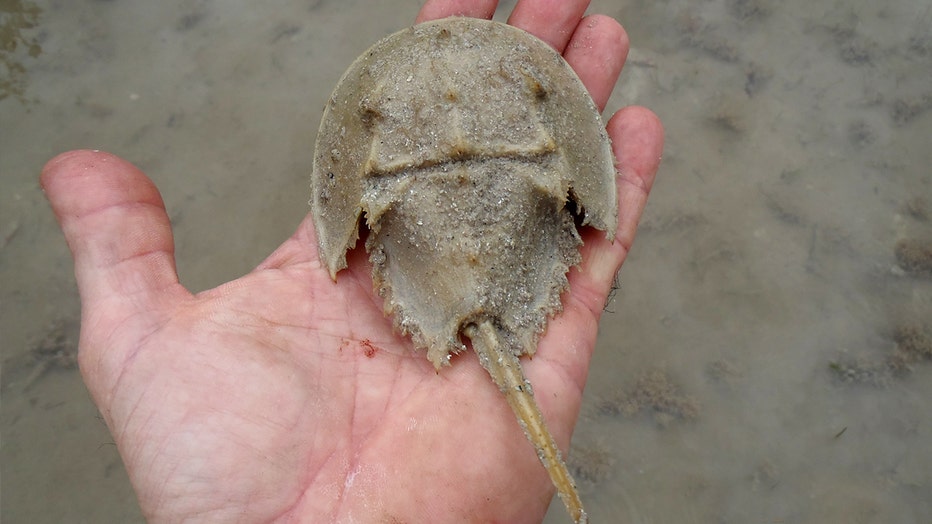Spotted a horseshoe crab? Florida wildlife officials want to know

Horseshoe crab at Alligator Point (FWC photo by Karen Parker)
TAMPA, Fla. - Horseshoe crabs may have been around for 450 million years, but there is still plenty to learn about the species. Because of this, Florida wildlife officials are once again asking for the public to report sightings during peak mating season.
The beginning of March marks a critical time for the marine species. They mate year-round but are more commonly spotted along the beaches in March and April, as well as September and October. Horseshoe crabs are likely to be sighted in the Bay Area on beaches in Hernando, Pinellas, Pasco, Manatee, and Sarasota counties.
FWC says mating horseshoe crabs are easily spotted, especially during high tide and within a few days of a new or full moon.
The smaller male will be attached to the larger female as they crawl up the beach up to the high tide line where the female digs a nest and lays her eggs.

A horseshoe crab in Big Pine Key (FWC photo(
READ: Medium to high levels of red tide detected off of Florida's west coast
FWC relies on public reporting of horseshoe crab sightings, through the Florida Horseshoe Crab Watch Program, which gives scientists valuable information about habitat use, population distribution and environmental conditions for nesting. Their numbers have declined in recent decades due to overfishing and loss of habitat.
FWC says anyone who spots a horseshoe crab on its back, flip back over by gently picking it up, holding both sides of the shell, turning it over and releasing it back into the water.
The FWC asks the public to report sightings by visiting MyFWC.com/research and clicking on "Crustaceans" then "Horseshoe Crabs" and selecting "Report Your Nesting Horseshoe Crab Sighting."
Results of the public reporting survey are published seasonally and include the number of animals sighted, tagged and resighted in a given area.

